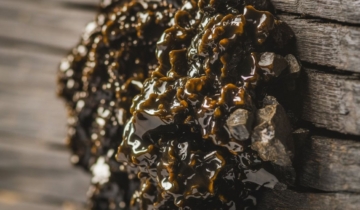Girl, is your hair falling out?
Female pattern hair loss, or androgenetic alopecia in females, is a very common complaint. In adult women, it primarily involves the frontal scalp and the crown. Left untreated, hair loss in women results in a slow, progressive decline in the density of scalp hair but does not typically progress to baldness – thankfully!
One thing for sure: hair loss is distressing! The pandemic has taught us to expect the unexpected, but hair loss may not be so unexpected. According to the American Academy of Dermatology, temporary hair loss after fever or illness is normal. Our bodies are designed to handle small doses of stress. But, we are not equipped to handle long-term, chronic stress without ill consequences. As well, a fever or illness can do the same, which will cause hair SHEDDING, not hair loss – which is distressing but not concerning because most of that hair will come back. YAY!
Ongoing, chronic stress, however, can cause or exacerbate many serious health problems, including skin and hair problems, such as acne, psoriasis, and eczema, and permanent hair loss.
So Yes, stress and hair loss can be related.
Three types of hair loss can be associated with high stress levels:
∙ Telogen effluvium. In telogen effluvium, significant stress (like giving birth or a Covid infection) pushes large numbers of hair follicles into a resting phase, so they stop growing and shed. Most people will notice hair shedding two to three months after a stressful event, and affected hairs might fall out suddenly when simply combing or washing your hair.
∙ Trichotillomania. Trichotillomania is an irresistible urge to pull out hair from your scalp, eyebrows or other areas of your body. Hair pulling can be a way of dealing with negative or uncomfortable feelings, such as stress, tension, loneliness, boredom or frustration.
∙ Alopecia areata. We know stress impacts your immune system. A variety of factors are thought to cause alopecia areata, possibly including severe stress. With alopecia areata, the body’s immune system attacks the hair follicles — causing hair loss.
So what are your options?
The primary goals of treatment are to minimize additional hair loss and to induce regrowth of terminal hairs. Because there are many possible reasons for why your hair is shedding, responses to treatment vary, ranging from no effect, to improvement limited to the inhibition of further hair loss, to a variable degree of regrowth of hair. The earlier we start the treatment, ideally prior to the development of extensive hair loss, the better the response.
First thing first – manage your expectations. When you consult a doctor for this reason, you have to keep in mind that realistic expectations regarding the duration of treatment and expected outcomes are key. At least several months of treatment are usually required to achieve initial clinical signs of a response, and effective pharmacologic therapy typically must be continued indefinitely to maintain improvement.
As a doctor I have a wealth of experience in prescribing medication that has proven results, here is a quick breakdown of the most used and why they work:
Topical minoxidil (commonly known as Rogaine), oral antiandrogenic drugs; and other topical, oral, and procedural therapies have been used for female hair loss. Hair transplantation surgery is an option for patients who have inadequate responses to medical therapy.
Talking about realistic expectations: Treatment with minoxidil takes at least four months to exhibit a visible effect, and use of the product for at least 12 months is recommended prior to concluding inefficacy.
In many studies, patients were more likely to report clinically significant hair regrowth than patients in the placebo groups. In addition, the mean increase in hair counts within treated areas was higher.
Spironolactone is an effective antiandrogen for female pattern hair loss and we have extensive experience with this drug for other indications in females (eg, hirsutism, acne, polycystic ovarian syndrome). Alternatives include finasteride (a 5-alpha-reductase inhibitor) or cyproterone acetate.
Finasteride is frequently used in the treatment of male pattern hair loss. Finasteride inhibits the conversion of testosterone to dihydrotestosterone (DHT), thereby reducing the effects of DHT on hair follicles. But here again, improvement is usually expected within six months, so we need not to be in a hurry to see results: hair growing phases are long and take time…
Oral minoxidil may be an alternative treatment for female pattern hair loss. A study of 52 women with hair loss compared oral minoxidil to the application of Rogaine (minoxidil 5%) and did not find a statistically significant difference in effect on total hair density. Oral dutasteride is an option in females who had attained only minimal improvement with finasteride.
OK OK OK, you might be thinking, but Dre Landry there has to be a more natural way to treat hair loss. Well, yes, yes indeed there is. PRP.
Platelet-rich plasma or PRP has been utilized for the treatment of male and female pattern hair loss. PRP therapy is based on the simple concept that growth factors released from platelets modulate hair cycle signaling pathways that contribute to regrowth of hair. In studies, PRP was more likely than placebo to demonstrate improvement in clinical photographs (57 versus 7 percent) and found greater improvement especially in hair density and hair caliber in the PRP group.
PRP achieves following effects:
- New hair growth (more research needed to confirm that)
- Thickening of pre-existing hair shafts
- Proliferation of dermal papillae cells
- Faster transition from telogen (shedding) to anagen (growing) phase
- Longer anagen phase
- Cellular differentiation and proliferation of perifollicular collagen, fibroblasts, and blood vessels
This is not the most fun and luxurious treatment I offer in my practice, but it certainly helps! We are able to harvest and use your own biological material to re-inject directly into the scalp. I utilize my own protocols that I have developed over the past 10 years of my medical aesthetic practice and I have seen some amazing results for both men and women.
Let’s talk about ingredients in products you might find on shelves or online. Here are a list of key ingredients to look out for and what they achieve for helping with your hair loss:
Copper peptide
-Inhibition of 5-α-reductase
Botanical stem cells
-Hair follicle stimulation
HA
-Hydration
Vit. B6 B5 B3
-Action on hair health
Amino Acids
-Action on hair growth
Caffeine
-Improvement of blood circulation to scalp
Does biotin have a role in hair growth?
Biotin, also known as vitamin B7, is a vitamin related to the metabolism of carbohydrates, fats, amino acids and purines. It also promotes blood circulation and therefore hair growth. Not only does B7 have a favorable role on the scalp, but also allows strength, elasticity and shine to our hair.
We now know more about the effects of biotin against hair loss and stimulation of hair growth. Therefore, deficiency of this vitamin will have impacts on hair, creating dull, fine, fragile and broken hair, with even hair falling out more quickly with a slowdown of its growth.
Another crucial factor is hormones! My colleagues and I have noticed the important influences of hormonal changes which can trigger alopecia. Premenopausal, and menopausal women, as well as those with thyroid dysfunction are associated with hair loss, as are many other diseases or conditions, one of the most frequent being iron deficiency anemia. This is why an extensive hormonal checkup is essential, because treating hair loss without treating the cause will lead to poor results.
Overall it is important to remember that the more you stress the more likely your hair shedding will get worse. So try and chill out! Realize that this is temporary and that healthy and active lifestyles will promote a healthy and happy individual with the potential to grow shiny and beautiful hair!

http://drgabriellelandry.com/
Read more from Dre Landry!
If you have any questions for Dre. Gabrielle Landry, feel free to leave them in the comments below, or can contact her clinic Elna Clinique.
Feature image via Pinterest





 No products in the cart.
No products in the cart.